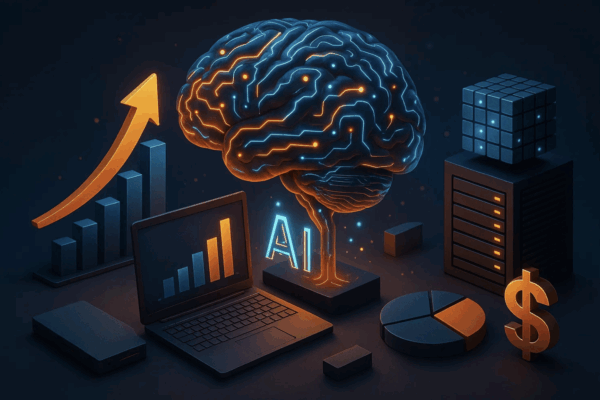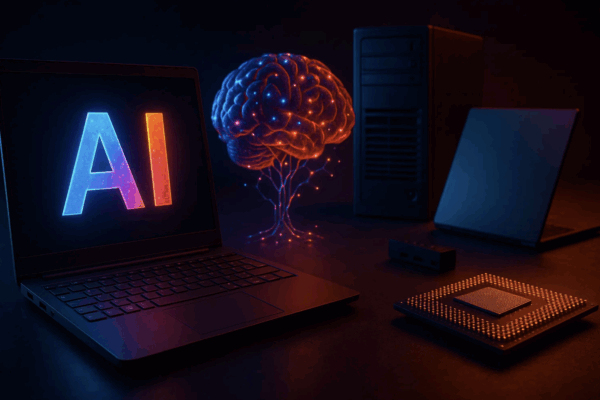

The Dark Side of Innovation: 7 Troubling Tech Trends of 2024
Innovation is often celebrated as the driving force behind progress, economic growth, and human advancement. In 2024, we are surrounded by groundbreaking technologies that promise to reshape industries and daily life. Artificial intelligence is powering smarter tools, automation is improving efficiency, and digital platforms are enabling connections across the globe.
Yet, beneath this wave of excitement lies a less glamorous reality: the dark side of innovation. Many of the same technologies that bring convenience and progress also raise serious concerns about privacy, inequality, security, and long-term stability. As society adapts to rapid technological change, these troubling trends demand close attention.
Here are seven troubling tech trends of 2024 that highlight the risks hidden behind innovation’s bright façade.
1. Artificial Intelligence and Job Displacement
Artificial intelligence has quickly moved from research labs into everyday business practices. Companies are adopting AI to streamline customer service, automate logistics, and even generate content. While this improves efficiency, it also leads to job displacement on a massive scale.
In 2024, millions of workers in roles such as data entry, customer support, and administrative services are at risk of being replaced by machines. The result is not only economic disruption but also increased inequality as workers without advanced digital skills struggle to remain relevant in the job market.
2. Data Privacy Under Threat
With more services moving online, vast amounts of personal data are collected daily. In 2024, concerns about data privacy have intensified. Tech giants and smaller startups alike continue to track browsing habits, location data, and personal preferences to fuel targeted advertising and machine learning models.
The troubling trend is that regulations often lag behind technology. Consumers may not fully understand how their data is being used, leaving them vulnerable to exploitation, identity theft, and manipulative marketing practices.
3. Cybersecurity Risks Growing in Scale
Innovation in connectivity has also expanded the attack surface for cybercriminals. In 2024, cyberattacks have grown more sophisticated, targeting critical infrastructure, financial systems, and even healthcare providers. The rise of ransomware and state-sponsored hacking poses threats not just to individuals but to global stability.
As more devices connect through the Internet of Things (IoT), vulnerabilities multiply. Without strong security measures, the digital systems we rely on could easily become points of failure.
4. Dependence on Cloud and Platform Monopolies
Cloud computing and platform-based services dominate business operations in 2024. While these technologies provide flexibility and scalability, they also create concentration of power in a few corporations. Companies and governments are increasingly dependent on big tech firms for storage, communication, and productivity tools.
This dependence creates troubling risks: outages can disrupt economies, pricing models can be manipulated, and smaller competitors struggle to survive. Innovation, instead of opening opportunities, risks creating monopolies that limit consumer choice.
5. Automation and the Human Skills Gap
Robotics and automation are transforming industries from manufacturing to logistics. However, the speed of automation in 2024 has outpaced society’s ability to retrain workers. A human skills gap is widening, leaving millions unprepared for jobs that require advanced technical knowledge.
Educational systems and corporate training programs have not scaled fast enough to meet the challenge. As a result, economic inequality grows, and communities dependent on traditional industries face uncertainty about their future.
6. Ethical Dilemmas in Emerging Technologies
From facial recognition systems to generative AI models, emerging technologies in 2024 raise urgent ethical questions. How do we ensure algorithms are free of bias? Who is accountable when AI makes harmful decisions? Should companies prioritize speed over responsibility?
The troubling reality is that ethical frameworks often come second to profit. Without strong governance, technologies that shape public life could reinforce discrimination, compromise freedoms, and weaken trust in institutions.
7. Environmental Costs of Innovation
Technology promises efficiency, but its environmental footprint is often overlooked. The rise of data centers, cryptocurrency mining, and electronic waste highlights the ecological cost of digital progress. In 2024, the demand for energy-intensive processes has put pressure on power grids and contributed to carbon emissions.
Innovation without sustainability creates a paradox: while technology helps us fight climate change, it also contributes to the problem. Balancing progress with responsibility is becoming one of the most pressing challenges of our time.
The Bigger Picture: Balancing Promise and Peril
The dark side of innovation does not mean technology is inherently harmful. Instead, it highlights the importance of responsible adoption, transparent governance, and proactive regulation. By acknowledging these troubling trends, policymakers, businesses, and individuals can work together to mitigate risks while still enjoying the benefits of innovation.
The future of technology in 2024 and beyond depends not only on breakthroughs but also on how society chooses to manage them. Innovation must serve humanity, not replace it, and progress must be sustainable, ethical, and inclusive.
Conclusion
Innovation is a double-edged sword. In 2024, while exciting technologies redefine the way we live and work, they also present profound challenges. From AI-driven job losses and privacy violations to cybersecurity risks and environmental costs, these troubling tech trends remind us that progress comes with responsibility.
For investors, businesses, and everyday users, the lesson is clear: embracing technology requires vigilance. By preparing for the risks, demanding accountability, and promoting sustainable practices, we can ensure that innovation uplifts society rather than undermining it.
The dark side of innovation may be troubling, but with foresight and collaboration, its risks can be transformed into opportunities for a safer, fairer, and more sustainable future.



